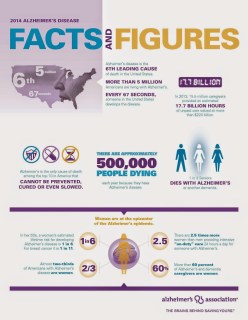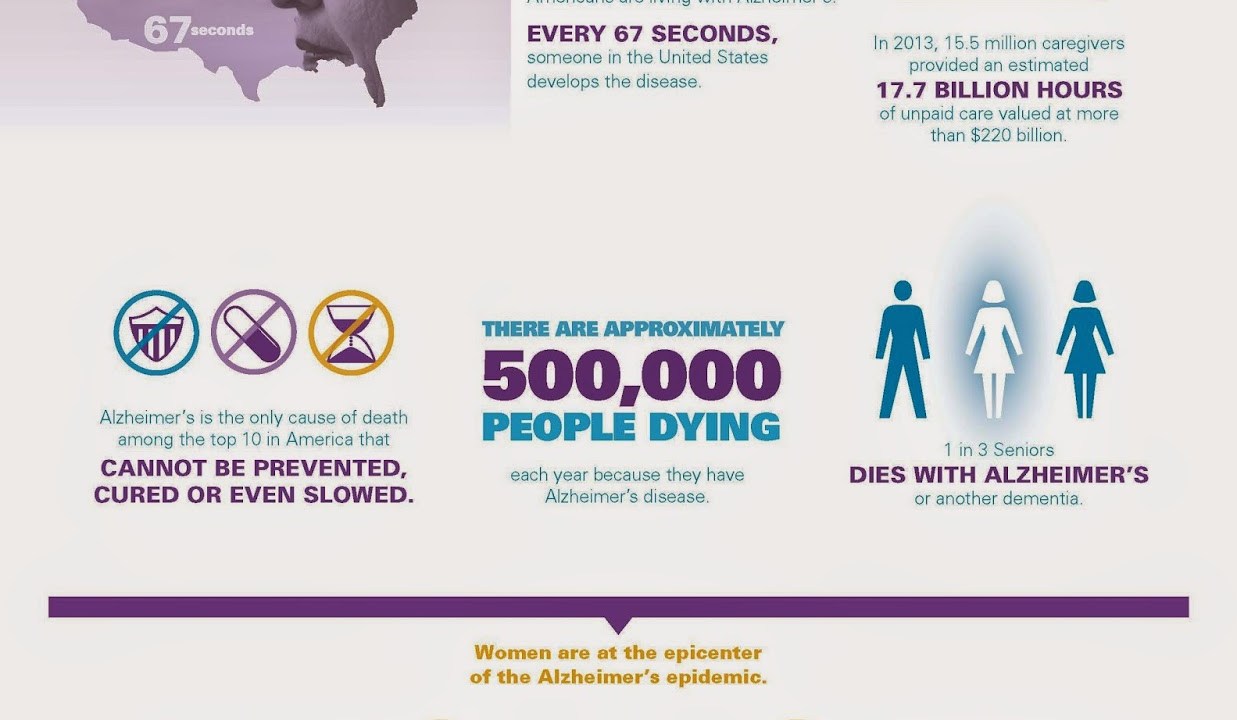Demographics are among the most stable of trends. Absent a change in immigration laws or a fatal pandemic, we can forecast the composition of the US population with a pretty high degree of accuracy. Working out the consequences of those demographic trends requires more thought and attention. In today’s post (her second this week), museum futurist Lisa Eriksen explores some of one of the serious demographic-related challenges facing the US today, one of great personal significance to her and to our field.
Several weeks ago my mother and I did what is probably the most difficult thing we will do in our lives; we placed my father, who has Alzheimer’s disease, in a residential care home. After more than six years of caregiving, my mother’s health is failing and we are both emotionally exhausted. This year I have had to forgo work and teaching opportunities (and sadly attending the AAM meeting) to assist my family. Now we are trying to adjust to the new “normal” and to process the sadness of being unable to care for my father in his home. The next path in our “dementia journey” (as we are now referring to it) will be figuring out how to pay for this long-term care without bankrupting my mother’s future.
Having lived in the world of dementia for so long, I am occasionally surprised that a great number of my museum colleagues have little understanding of the issue—although I am finding more and more people who have a loved one with Alzheimer’s. Today, it is estimated that 5.2 million Americans have some form of dementia. In the coming years, this number will escalate rapidly as baby boomers age. Therefore, it has become my calling as a museum futurist to alert my colleagues to this fast-growing trend and discuss with them how our museums might respond and assist our communities.
 |
| Click to Enlarge |
Here is what we know about the future: The number of Americans surviving into their 80s and beyond will continue to grow dramatically due to advances in medical care. And the boomers are just now reaching the age of elevated risk of dementing illness. The Alzheimer’s Association, in its most recent Facts and Figures report, states that by 2025—in just 11 years—an estimated 7 million people will have the disease. That’s a 40% increase. By 2050, this number could reach almost 14 million, barring any medical breakthroughs. With current funding levels for research the prospect of a breaksthrough does not appear likely. Women are at the center of this crisis, being more likely to have Alzheimer’s and more likely to become caregivers.
If these numbers don’t cause you to take interest, the economic impact should. It is the most expensive disease in the nation. This year the direct costs of caring for those with Alzheimer’s will total an estimated $214 billion, including $150 billion in costs to Medicare and Medicaid. Nearly one in every five dollars spent by Medicare is on people with dementia. It is estimated that Alzheimer’s will cost an estimated $1.2 trillion (in today’s dollars) in 2050. This epidemic will put a huge strain our healthcare system and economy in the future. Will this drain financial resources from education and other civic expenditures, like museums?
People with memory loss will be visitors to your museum, whether you know it or not. They will require specific accommodation and programs. How will we respond to their needs, desires and challenges? As public institutions with a mission of community service, how do we serve this population? Fortunately, a number of institutions have committed to developing programs and services for those with memory loss. Other museums are in various stages of launching new projects. There are leaders that we can look to, like MoMA with its gold-standard program Meet Me at MoMA, the Frye Art Museum and its here:now program, and the Museum of Photographic Arts, San Diego with its SEPIA and Memories at the Museum programs.
As I continue on my personal and professional journey, I am discovering new programs and talking with museum colleagues about strategies to address this future challenge. Currently, I am interviewing presenters from a 2013 California Association for Museums conference session, “Contented Engagement: Serving Visitors with Memory Loss,” to see how their programs have, or have not, developed over the past year. My research also includes some new programs in development, partnerships between Bay Area museums and our regional Alzheimer’s Association. I look forward to reporting back on some of my discoveries in a future blog post.
If your museum is providing programs and services for people suffering from dementia, or their caregivers, please provide information & links in the comments section, below. If you have ideas for things museums could do that you don’t see being done anywhere yet, Lisa and I would love to hear those ideas as well.










Thank you for sharing your personal and professional feelings. I am forwarding this on to those I know who will find this of interest (and may not, as yet, be introduced to you). I discovered this via twitter.
lynn@maturityanditsmuse.org
Thank you for sharing your story! I currently work at the Fine Arts Museums of San Francisco and we have a partnership with the Alzheimer's Association. We've also just partnered with the Oakland Museum of California to help create a program for early stage visitors in the East Bay. I would love to pick your brain and hear what you have discovered from the 2013 panel! My work e-mail is: rbradley@famsf.org
As a former caregiver for my mother, and the author of the book "Inside the Dementia Epidemic: A Daughter's Memoir," I know you are absolutely right about the need for dementia-friendly programs that encourage people who are living with Alzheimer's disease or another dementia to be treated as valued members of the community. As you point out, the number of people with dementia is growing as boomers age, and many of us live longer. Unfortunately, a stigma surrounds cognitive impairment, and people often assume that people with dementia are just "shells of their former selves" or no longer "here." We need to remember that many ways remain to connect and communicate with people with dementia, even in the final stages. I applaud your advocacy, and wish you the best.
I'm a student in the Johns Hopkins Museum Studies grad program. My final project for my Introduction to Museum Education class was about art museum programs for people with dementia. You can see it here: https://voicethread.com/share/5679180/
The most significant part of my research for this presentation was about how these programs address excess disability, which is prevalent among people with dementia. Excess disability happens when someone who is disabled is not allowed to do something they are capable of doing, and thus become more disabled than they actually are. A study of a program for people with dementia at the National Gallery of Australia was found to address excess disability.
At the Minnesota Historical Society, we are heading into the third year of developing a program for those with Alzheimer’s and related diseases that works with MNHS’s specific mission and resources. As part of this journey, MNHS learned from art museums, became certified as TimeSlips facilitators, and struggled to find the right fit and partners. We went into memory care units to spark creative storytelling with our historic photography collection. We tried tours in at our museum – but found our rich multi-media experiences, exhibit style, and our energetic school groups hurt the tours for our memory loss groups. That's when we shifted to inviting these groups into our historic homes. It was a natural fit. We could have tours easily during closed hours, each room was small and told a clear story, and sensory add-ons were plentiful. We are just wrapping up this Open Door pilot and are excited to move into the full implementation phase. Our testing groups provided invaluable feedback and have been great partners. Their enthusiasm let's us know we are on to something! If you have any questions feel free to email – maren.levad@mnhs.org
Thank you all for sharing your experience and thoughtful comments! I have emailed those of you providing contact information and look forward to learning more about your programs.
A wonderful presentation, museumutopia – thank you for sharing the link. I was not familiar with the term “excess disability,” but certainly know of the concept. This is why I believe museums can and should play a role in helping people maintain health and human dignity. I also believe we can be advocates in drawing attention to the fact that this is a disease—which needs funding for research—not just a factor of “getting old.” Keep up the good work everyone!
I hope you will join me in participating an online conversation on dementia hosted by the Institute for the Future on May 15th. The program is part of the IFF's Aging Forward series of conversations on the future of aging.
Does anyone have any museum related resources for people living with dementia and creative engagement within the home/online, other than viewing digitized collections or exhibits? In person gallery talks/activities are great, but we are missing a key audience who are home bound.
Thanks in advance!